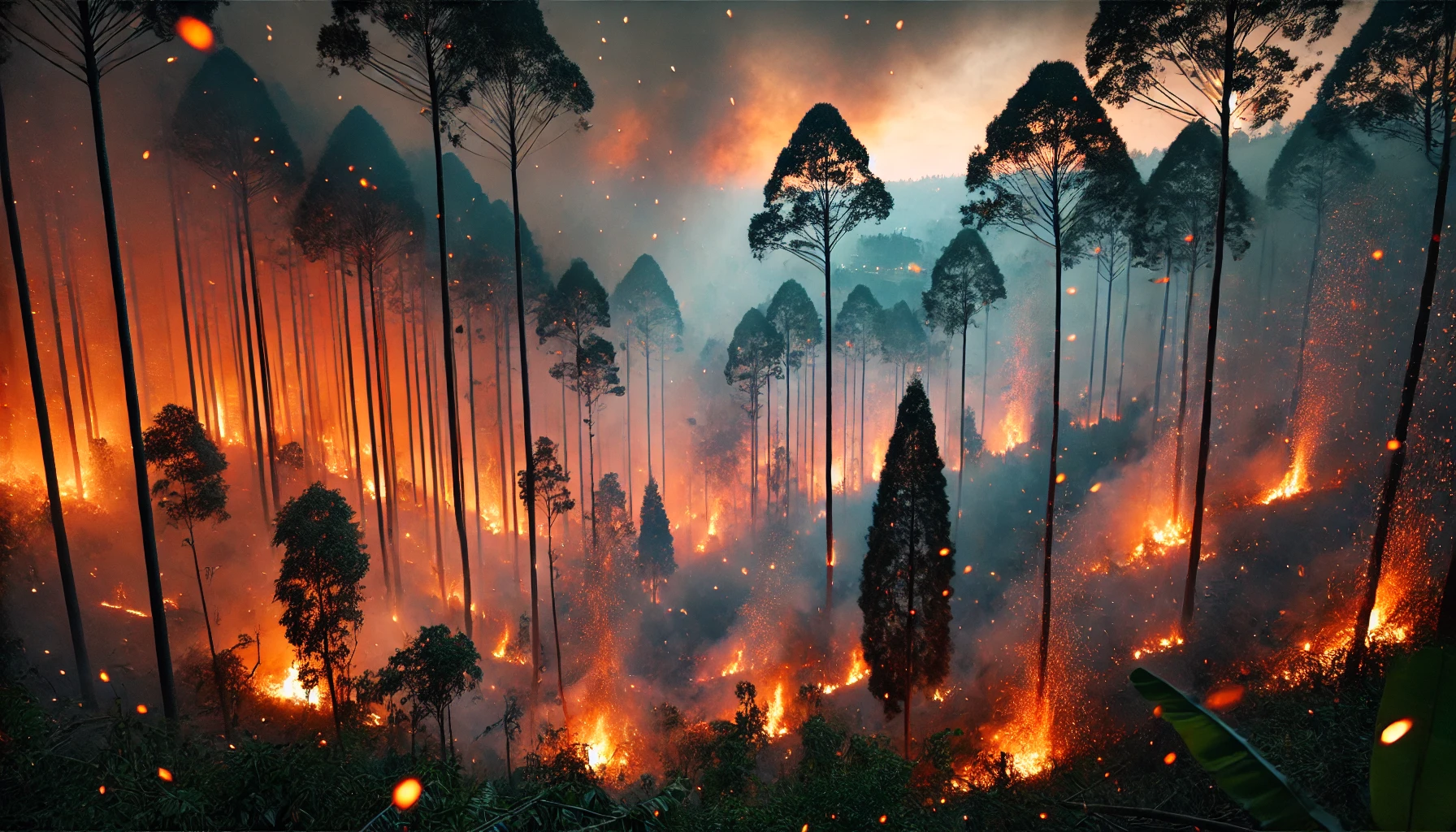Hurricanes and Typhoons: The Deadliest Storms on Earth
Introduction:
Hurricanes and typhoons are among the most powerful and destructive natural phenomena on Earth. These massive tropical storms can wreak havoc on coastal areas, causing widespread destruction, loss of life, and economic devastation. Though they are essentially the same type of storm, they are referred to by different names depending on the region of the world they affect. In this article, we’ll explore what hurricanes and typhoons are, how they form, their impacts, and the deadliest storms recorded in history.
What are Hurricanes and Typhoons?
Hurricanes and typhoons are both tropical cyclones, which are intense low-pressure systems that form over warm ocean waters in the tropics. They are characterized by strong winds, heavy rainfall, storm surges, and sometimes tornadoes. The terms “hurricane” and “typhoon” are used to describe the same weather phenomenon but in different parts of the world.
- Hurricanes: These storms occur in the North Atlantic, Central, and Eastern Pacific Oceans.
- Typhoons: These storms develop in the Western Pacific Ocean, particularly in Southeast Asia, China, and Japan.
- In the Indian Ocean and South Pacific, they are simply referred to as cyclones.
To be classified as a hurricane or typhoon, the storm must have sustained winds of at least 74 mph (119 km/h). Depending on the wind speed, tropical cyclones are categorized using different scales, with the Saffir-Simpson Hurricane Wind Scale being the most widely known for hurricanes. This scale classifies storms into five categories, with Category 5 hurricanes being the most intense, having winds exceeding 157 mph (252 km/h).
How Do They Form?
Tropical cyclones, including hurricanes and typhoons, form under specific atmospheric and oceanic conditions:
- Warm Ocean Waters: Tropical cyclones require sea surface temperatures of at least 26.5°C (80°F) to provide the energy necessary for storm development. The heat from the ocean fuels the storm’s growth.
- Low Wind Shear: Low wind shear, which refers to minimal variation in wind speed and direction at different levels of the atmosphere, allows the storm to organize and intensify. High wind shear can tear a developing storm apart.
- Moist Atmosphere: The presence of warm, moist air in the middle and lower levels of the atmosphere helps create the towering thunderstorm clouds that drive the cyclone’s development.
- Rotation (Coriolis Effect): The Earth’s rotation causes the storm to spin. Tropical cyclones do not form within 5 degrees of the equator because the Coriolis force is too weak to induce rotation.
- Pre-existing Weather Disturbance: A tropical cyclone typically begins as a tropical disturbance, which is a cluster of thunderstorms over warm waters. When the disturbance organizes and grows, it can develop into a tropical depression, then a tropical storm, and finally a hurricane or typhoon.

You May Also Like: Tornado Outbreaks: When Multiple Tornadoes Strike at Once
Structure of a Hurricane/Typhoon
Tropical cyclones have a distinctive structure:
- Eye: At the center of the storm is the “eye,” a region of calm weather where skies are often clear, and winds are light. The eye is typically 20 to 40 miles (32 to 64 km) in diameter.
- Eyewall: Surrounding the eye is the “eyewall,” a ring of towering thunderstorms that produce the storm’s strongest winds and heaviest rains. This is the most dangerous part of the storm.
- Rainbands: Spiraling outward from the eyewall are bands of rain and thunderstorms that can extend hundreds of miles from the center.
Impacts of Hurricanes and Typhoons
Hurricanes and typhoons cause widespread destruction through multiple mechanisms:
- High Winds: The intense winds can destroy buildings, uproot trees, and knock out power lines. Category 5 hurricanes have winds strong enough to level entire communities.
- Storm Surge: Storm surge is the abnormal rise in sea level caused by the storm’s winds pushing water toward the shore. This can lead to severe coastal flooding, often the most deadly aspect of a tropical cyclone. During Hurricane Katrina (2005), storm surges reached 28 feet (8.5 meters) in some areas.
- Flooding: Heavy rainfall from hurricanes and typhoons can lead to inland flooding, which can affect areas far from the coast. Rainfall totals from these storms can exceed 40 inches (100 cm) in some cases, causing rivers to overflow and triggering landslides in mountainous areas.
- Tornadoes: Hurricanes and typhoons can also spawn tornadoes, particularly in the outer rainbands, adding to the storm’s overall destructive potential.
The Deadliest Hurricanes and Typhoons in History
Some tropical cyclones have left a trail of devastation that remains etched in history. Here are a few of the deadliest storms ever recorded:
1. The 1970 Bhola Cyclone (Bangladesh)
- Death Toll: Estimated 300,000 to 500,000
- Impact: This cyclone struck what was then East Pakistan (now Bangladesh) in November 1970, making it the deadliest tropical cyclone in recorded history. Storm surges flooded vast areas, and the lack of preparedness exacerbated the disaster.
2. Typhoon Haiyan (Yolanda) – 2013 (Philippines)
- Death Toll: Over 6,300
- Impact: One of the strongest tropical cyclones ever recorded, Haiyan made landfall in the Philippines with sustained winds of 195 mph (315 km/h). It caused catastrophic damage, particularly in the city of Tacloban, where storm surges reached over 13 feet (4 meters).
3. Hurricane Katrina – 2005 (United States)
- Death Toll: Over 1,800
- Impact: Katrina struck the U.S. Gulf Coast in August 2005, causing widespread devastation in New Orleans due to levee failures. Storm surges and flooding displaced hundreds of thousands of people, and it remains one of the costliest hurricanes in U.S. history.
4. Typhoon Nina – 1975 (China)
- Death Toll: Estimated 229,000
- Impact: After making landfall in China, Typhoon Nina caused the Banqiao Dam to fail, leading to massive flooding. The floods wiped out entire communities and were compounded by further dam collapses, making it one of the deadliest natural disasters in modern history.
5. The Great Galveston Hurricane – 1900 (United States)
- Death Toll: Estimated 6,000 to 12,000
- Impact: The deadliest hurricane in U.S. history struck Galveston, Texas, with little warning. The storm surge inundated the island city, and most of the destruction was caused by flooding and wind damage.
Preparedness and Mitigation
While it is impossible to prevent hurricanes and typhoons, their impacts can be mitigated through early warning systems, evacuation plans, and resilient infrastructure. Advances in meteorology have made it possible to predict the path and intensity of tropical cyclones more accurately, giving people more time to prepare.
- Evacuation Orders: Governments in hurricane- and typhoon-prone regions often issue evacuation orders ahead of storms, allowing residents to move to safer areas.
- Building Codes: In places like the U.S. and Japan, building codes are designed to ensure that structures can withstand high winds and flooding.
- Disaster Relief: International and national disaster relief organizations play a critical role in providing aid to affected areas after a storm, helping to rebuild communities and support displaced people.
Conclusion
Hurricanes and typhoons are among the most devastating forces of nature, capable of bringing unimaginable destruction. While science has advanced our understanding of these storms, their sheer power and unpredictability mean that they will continue to pose significant threats to coastal communities around the world. As climate change raises ocean temperatures and sea levels, these storms may become even more intense in the future, making preparedness and mitigation efforts all the more important.
Also Visit: Cybersecurity Risks: Protect Yourself from Online Threats




2 comments